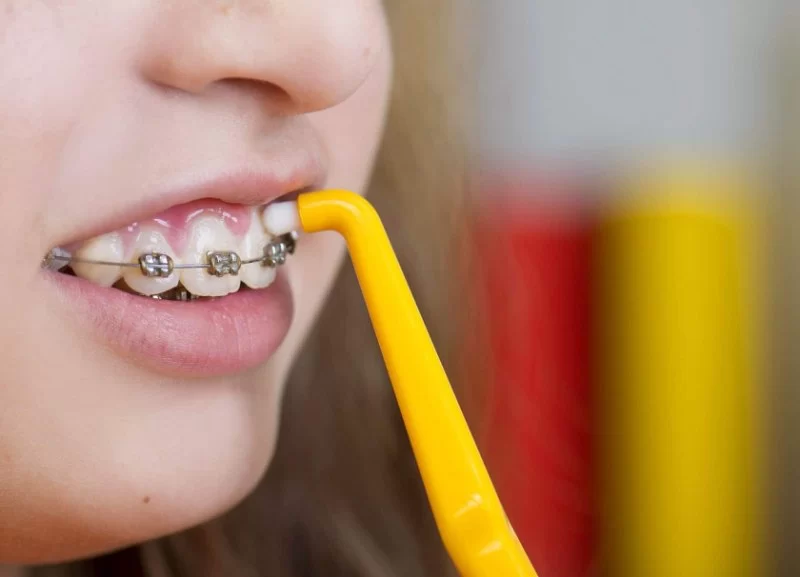
- Understanding-the-Challenges
- Daily-Oral-Hygiene-Routines-for-Children-with-Braces
- Techniques-for-Effective-Brushing-and-Flossing
- Foods-to-Avoid-for-Better-Oral-Health
- How-Parents-Can-Help-Maintain-Healthy-Habits
- Real-Stories-and-Practical-Advice
- Expert-Recommendations-from-Family-Dentistry-Online
1. Understanding the Challenges
For children wearing braces, maintaining oral hygiene is a daily balancing act. Food can easily get trapped in brackets and wires, creating a breeding ground for plaque and bacteria. Without proper care, this buildup can lead to cavities, gum irritation, and white spots on the teeth once the braces come off. That’s why oral hygiene tips for children with braces are not just helpful—they’re essential for a healthy, confident smile.
Most kids find the first few weeks after getting braces particularly challenging. Their gums may feel sore, and brushing around brackets takes extra patience. However, with the right tools, techniques, and consistent guidance, maintaining clean and healthy teeth becomes second nature.
2. Daily Oral Hygiene Routines for Children with Braces
2.1 Morning care routine
Children should start their day by brushing thoroughly for at least two minutes using a soft-bristled toothbrush or an orthodontic brush designed for braces. The angled bristles help clean under wires and between brackets where food particles hide. Fluoride toothpaste strengthens enamel and prevents demineralization, keeping teeth protected throughout the day.
2.2 Midday rinse and check
After lunch, a quick rinse with water or a fluoride mouthwash helps wash away trapped food and sugars. If possible, children should check their braces in a mirror to ensure nothing remains lodged between brackets. These small mid-day habits greatly reduce plaque buildup.
2.3 Evening deep cleaning
Before bedtime, brushing and flossing become even more important. Using interdental brushes or floss threaders helps remove food stuck in tight spaces. This step prevents bacteria from growing overnight and protects both teeth and gums from irritation.
3. Techniques for Effective Brushing and Flossing
3.1 Mastering the brushing technique
Brushing with braces requires slow, deliberate motions. Parents can encourage their children to brush at a 45-degree angle—first above the brackets, then below them. This ensures that no area is missed. Electric toothbrushes with pressure sensors can be helpful for kids who brush too hard, preventing enamel wear or gum damage.
3.2 The importance of flossing with braces
Flossing can be tricky, but it’s vital for preventing gum disease. Waxed dental floss slides more easily between wires and teeth without shredding. Floss threaders or orthodontic floss picks simplify the process for children who may struggle with manual dexterity. Consistent flossing keeps gums healthy and reduces inflammation caused by trapped plaque.
3.3 Using mouthwash effectively
An alcohol-free fluoride mouthwash provides an extra layer of defense. It helps strengthen enamel, reduces bacteria, and reaches areas that brushing can’t. For children, gentle flavors and low-alcohol formulas are ideal to encourage daily use without discomfort.
4. Foods to Avoid for Better Oral Health
4.1 Sticky and hard foods
Children with braces should steer clear of sticky candies like caramel, taffy, and gummy bears. These can pull at the wires and dislodge brackets. Hard foods like nuts, popcorn, and crunchy chips can break the orthodontic components, leading to costly repairs and discomfort.
4.2 Sugary snacks and drinks
Frequent exposure to sugary foods increases the risk of cavities. Soda, fruit juices, and sweetened teas coat teeth in sugar that feeds bacteria. Encourage water and milk instead, which are both tooth-friendly and support overall oral health.
4.3 Smart alternatives
Soft fruits, yogurt, mashed vegetables, and cheese make excellent alternatives for children with braces. These foods are gentle on brackets and support a balanced diet that promotes strong teeth and gums.
5. How Parents Can Help Maintain Healthy Habits
5.1 Supervision and encouragement
Parents play a key role in their child’s orthodontic success. Supervising brushing and flossing routines, especially for younger kids, helps reinforce good habits. Encouraging positive routines through praise or small rewards can motivate children to care for their braces daily.
5.2 Regular dental checkups
Scheduling consistent visits with an orthodontist and family dentist ensures that braces are in good condition and that teeth remain cavity-free. Professional cleanings remove plaque that even diligent brushing can miss. These visits also offer parents a chance to ask questions about maintaining oral hygiene with braces.
5.3 Setting a routine
Consistency is key. Setting a daily routine—morning, after lunch, and before bed—helps children internalize good habits. Many parents find that turning oral care into a shared family activity encourages cooperation and turns responsibility into routine.
6. Real Stories and Practical Advice
When 11-year-old Olivia got braces, she struggled with food getting stuck between her brackets. Her dentist introduced her to an interdental brush, which made cleaning easier and more effective. Within weeks, her gums looked healthier, and her confidence improved. Stories like Olivia’s show that practical tools and patience can transform a child’s oral care experience.
Parents across the U.S. share similar success stories—like using timers for brushing or playing a child’s favorite song during their oral care routine. These simple, personal touches make maintaining oral hygiene with braces less of a chore and more of a positive habit.
7. Expert Recommendations from Family Dentistry Online
7.1 Professional guidance for orthodontic care
Family Dentistry Online provides in-depth advice on oral hygiene tips for children with braces and other orthodontic needs. Their trusted dental experts emphasize prevention, offering step-by-step guides to make home care easier and more effective.
7.2 Choosing the right products
From orthodontic toothbrushes to fluoride mouthwashes, Family Dentistry Online helps parents select the best tools to support their child’s oral health journey. Each recommendation is based on clinical insights and real-world experiences from dental professionals.
7.3 Encouraging lifelong habits
Developing strong oral hygiene habits during orthodontic treatment sets the foundation for lifelong dental health. With resources from Family Dentistry Online, parents and children can navigate braces care confidently, ensuring healthy smiles that last long after the braces come off.

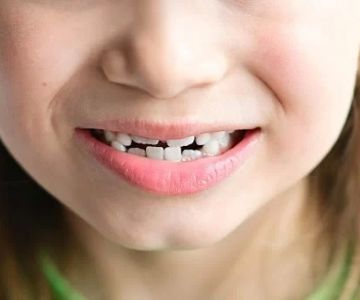




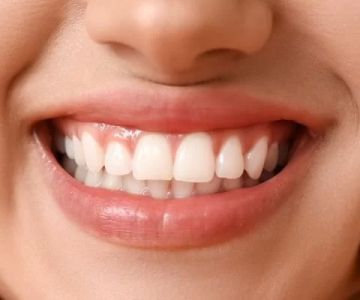
 Broadmoor Valley Dental4.0 (133 review)
Broadmoor Valley Dental4.0 (133 review) Comfort Dental South Independence – Your Trusted Dentist in Independence4.0 (334 review)
Comfort Dental South Independence – Your Trusted Dentist in Independence4.0 (334 review) Davis Dental Group4.0 (72 review)
Davis Dental Group4.0 (72 review) Southside Orthodontics - Your Colonial Heights and Chesterfield Orthodontist4.0 (274 review)
Southside Orthodontics - Your Colonial Heights and Chesterfield Orthodontist4.0 (274 review) Liberty Dental4.0 (487 review)
Liberty Dental4.0 (487 review) Summit View Dentistry PC5.0 (70 review)
Summit View Dentistry PC5.0 (70 review) The Importance of Oral Health Education During Pregnancy for a Healthy Pregnancy
The Importance of Oral Health Education During Pregnancy for a Healthy Pregnancy Best Tips for Brushing Your Teeth Properly for Healthy Gums: Essential Techniques for Oral Health
Best Tips for Brushing Your Teeth Properly for Healthy Gums: Essential Techniques for Oral Health Why Skipping Dental Checkups Can Lead to Bigger Oral Health Problems
Why Skipping Dental Checkups Can Lead to Bigger Oral Health Problems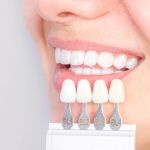 Advantages of Porcelain Dental Restorations
Advantages of Porcelain Dental Restorations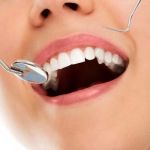 How Can Diabetes Cause Tooth and Gum Problems? Preventing and Managing Oral Health Issues
How Can Diabetes Cause Tooth and Gum Problems? Preventing and Managing Oral Health Issues Healthy Habits for Promoting Good Oral Health and Hygiene: Tips for a Healthy Smile
Healthy Habits for Promoting Good Oral Health and Hygiene: Tips for a Healthy Smile